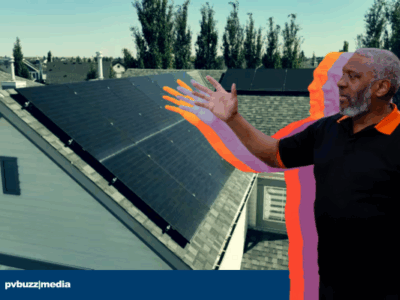NREL | March 31, 2015 — The Solar Access to Public Capital (SAPC) working group has released new best practices guidelines for solar photovoltaic (PV) systems, with the goal of increasing investor confidence in the long-term viability of PV systems.
The guides – SAPC Best Practices in PV System Installation and SAPC Best Practices in PV Operations and Maintenance – were developed by SAPC subcommittees, each involving dozens of solar and finance entities.
The Solar Access to Public Capital (SAPC) working group, convened by the Energy Department’s National Renewable Energy Laboratory, is comprised of 425 members of the PV market chain, including development, legal, financial, accounting, engineering, and other communities engaged in solar asset deployment, finance and operation.
“The best practices may provide valuable uniformity in the way solar assets are developed. In turn, investors can be confident that solar energy systems are deployed and maintained with consistency and in a manner that protects long-term system production and asset cash flows,” NREL Project Technical Lead Michael Mendelsohn said. “As investors become more familiar with and confident in the industry-developed SAPC protocols, the hope is that due diligence costs, project review time, and the required yield to raise capital will all decrease.”
According to Christopher Doyle of Dividend Solar and the Institute for Building Technology and Safety, who led the SAPC installation best practices subcommittee, “The creation of these guides tells a great story of collaboration between the solar industry, capital providers, and rating agencies to ensure the quality of solar PV systems and ultimately the long-term health of the market.”
The guides include recommended contractor and provider qualifications, key performance indicators, links to external resources, and additional best practices. Additional SAPC activities include standardization of solar contract templates, development of performance datasets, and engaging rating agencies via a mock securitization process to comprehend their risk perspectives of the asset class.
This work is supported by the Energy Department’s SunShot Initiative, which is a national effort to make solar energy cost-competitive with traditional energy sources by the end of the decade. Through SunShot, the Energy Department supports private companies, universities and national laboratories working to drive down the cost of solar electricity to $0.06 per kilowatt-hour.
To download the best practices and standard contracts or learn more about SAPC, please visit https://financeRE.nrel.gov. To participate in SAPC, please contact [email protected].
NREL is the U.S. Department of Energy’s primary national laboratory for renewable energy and energy efficiency research and development. NREL is operated for the Energy Department by The Alliance for Sustainable Energy, LLC.














Comments